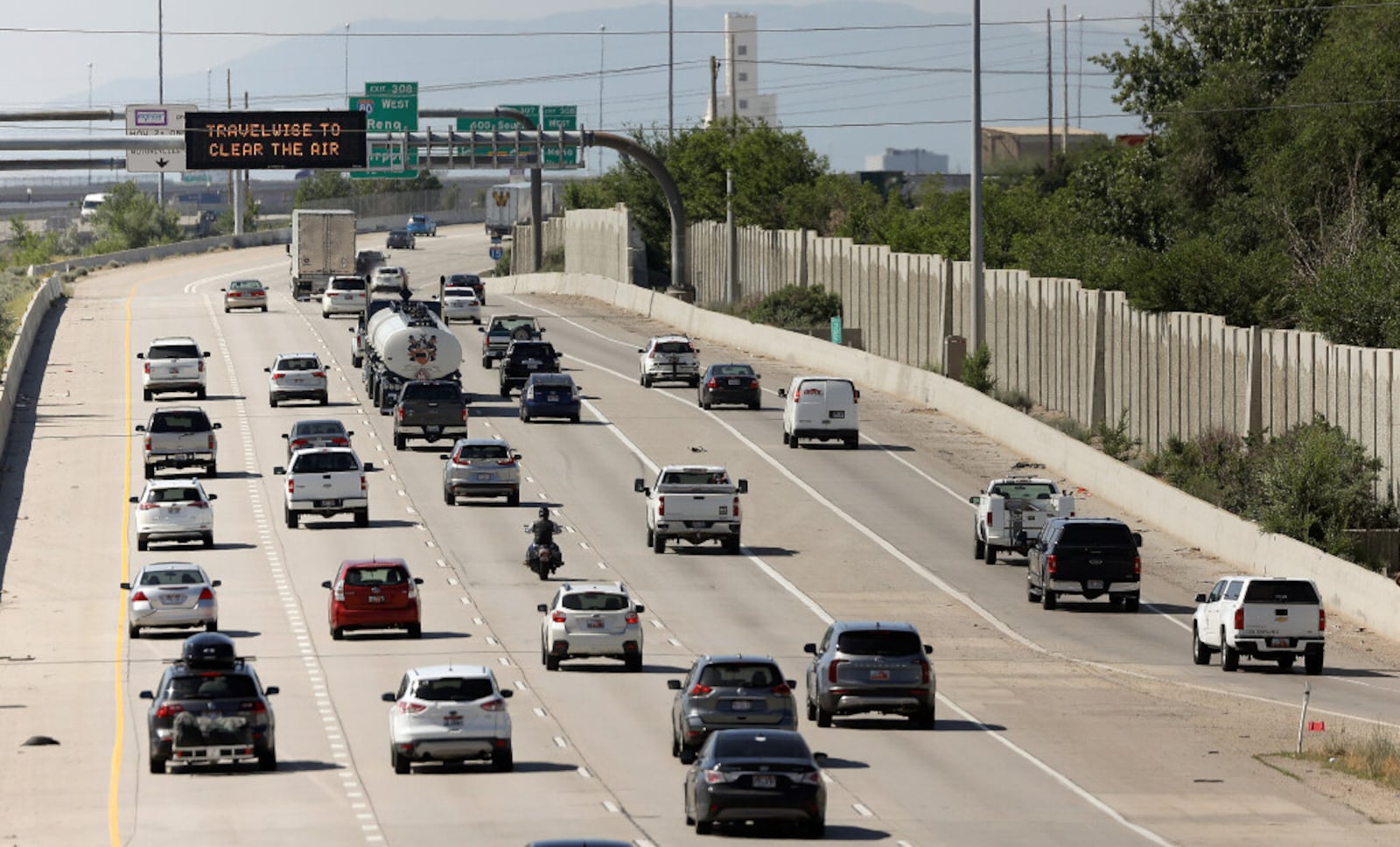Vehicles travel on I-15 in Salt Lake City. | Photo by Kristin Murphy, Deseret News
The proposed plan to widen Utah’s Interstate 15 (I-15) from Salt Lake City to Farmington has brought a wave of discussion from residents about potential impacts to businesses, costs, transportation alternatives and more—highlighting the ripple effect locals are likely to feel as the Utah Department of Transportation (UDOT) considers the project in the months to come.
Not only is the plan dramatically increasing in projected expenses—jumping from $1.7 billion in 2022 to a revised estimate of $3.7 billion in September of this year—but it also has the potential to force dozens of homeowners and businesses to move and make way for an expanded highway.
UDOT frames the project as a way to address aging infrastructure, reduce congestion and create paths to connect communities previously separated by the highway.
Brigham Mellor, Farmington city manager, says the impact appears to be minimal after UDOT released an environmental impact study and says the department has historically taken their needs into account. But he notes some concerns from homeowners who will be forced to move and the potential changes to traffic flow within the city.
On top of that, he says, the project could also encourage more people to commute from Farmington to Salt Lake City for jobs, which harms the city’s growth strategy.
“We’re interested in creating a daytime community and getting people to live and work in Davis County rather than exporting them to Salt Lake County,” Mellor says. “That doesn’t mean we are opposed to the highway widening or anything; it’s just something everybody needs to keep in mind.”
For businesses, this highlights the importance of navigating the infrastructural changes wisely. Ida Baghoomian, board member of the Utah Independent Business Coalition, says companies can take several steps to ensure success during the project.Staying informed about the project’s updates and plans will be crucial, she says, and the changes may create opportunities for businesses to use digital advertising through social media in place of traditional, fixed advertising. Building on that advertising momentum, she notes that incentive programs like rewards or discounts can enhance customer loyalty and people showing up in person.
Staying flexible is essential, according to Baghoomian.
“Exploring alternative operating hours, implementing special promotions or incentives, or embracing online platforms and social media can help maintain visibility and attract customers, even in the face of construction-related challenges,” she writes. Of equal importance is a business owner’s commitment to regularly update customers on any changes to business operations, access or parking arrangements.
“Providing clear information on alternative routes or transportation options helps customers continue to support local businesses during the construction phase,” Baghoomian says.
Mellor says the biggest issues will play out at the border of Davis and Salt Lake Counties, where more businesses are likely to be displaced. To him, the project’s success depends on whether UDOT can prove to locals they won’t be negatively affected.
“It remains to be seen how much impact that will be,” he says. “People who are left don’t want to be left with a worse-off situation.”

